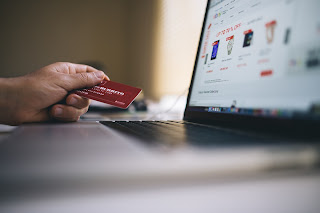WHAT ARE FOREX CARD CHARGES, AND HOW TO AVOID THEM?
The jitters of excitement for an upcoming international trip are understandable. The feeling of traversing through mesmerizing locations, delving into unique cultures, and indulging in the experience of a lifetime make every holiday memorable and endearing. However, besides all the packing, passport and visa requirements, flight and accommodation, and bookings, have you thought of how you will transact abroad? It might come as an unpleasant surprise, but Credit and Debit card transactions in overseas locations come with a Forex card charge, which can increase the overall expenses of your trip. However, there are foolproof ways to dodge such charges. How? Let us find out.
WHAT IS A FOREIGN TRANSACTION FEE?
Simply put, foreign transaction fees, also known as foreign purchase transaction fees, are charges levied by your usual Debit or Debit card when used abroad. The foreign transaction fee typically ranges from 1 percent to 4 percent for each transaction. Thus, for example, if your credit card has a 2 percent foreign transaction fee, you must pay an additional INR 4 for every INR 100 you spend abroad. Thus, when you use these cards for multiple small purchases or one mega purchase abroad, the fees immediately shoot, making an expensive international all the more exorbitant.
Besides the foreign transaction fee incurred via Debit or Credit Card swiping, we also have the international ATM fee to consider. Banks and credit unions typically charge a flat fee, which may shoot up to USD 5 or INR 406, for using an ATM network overseas, along with a percentage of the amount you withdraw. So, the ultimate conclusion is that transacting money abroad in any form, either via a Debit or Credit card, can burn a hole in your pocket. But there are some ways by which you can reduce the burden of FOREX Card charges.
HOW TO MINIMIZE FOREIGN TRANSACTION FEES ON YOUR NEXT OVERSEAS TRIP?
Look for Banks with Low Fee Options – Some banks and online institutions have accounts that are friendly to international travelers. They may have pretty low foreign transaction fees or travel-friendly ATM fee reimbursements on international ATMs.
Opt for an International Travel Card – One of the best ways to save money on your next overseas trip is by applying for an international travel card on time. They do not have any Forex card charges, meaning there will be no additional swiping amount at PoS counters abroad. Likewise, the best International travel cards come with a lock-in exchange rate feature, which protects your money from fluctuating FOREX rates.
Find Banking Institutions with International Networks – Some banking institutions have partnerships with other banks abroad so travelers can use their ATMs and not pay out-of-network fees. Signing up with such institutions can help you dodge foreign transaction fees abroad to a considerable extent.
Consider Upgrading Your Services – Banks may sometimes waive foreign transaction fees for customers with premium checking and savings accounts. They may also waive ATM fees worldwide. However, such accounts usually have a high monthly fee with a minimum balance requirement of several thousand. So, if you are an avid traveler on multiple international trips a year, you may consider this option.
So, there we have it, a comprehensive overview of Forex card charges and ways to avoid them.




Comments
Post a Comment